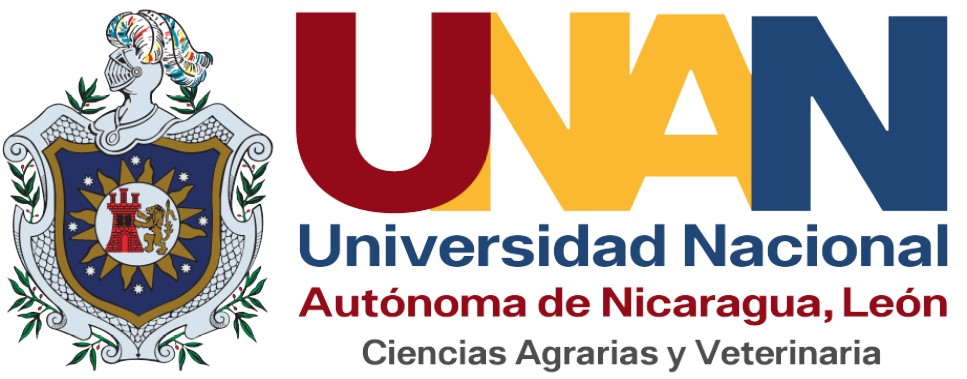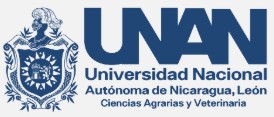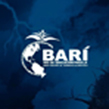Salinity variation affect population growth rate and reproductive capacity of Brachionus plicatilis: an approach to climate change
DOI:
https://doi.org/10.5377/ribcc.v6i13.11872Keywords:
Rotifers, Salinity, Stress, ReproductionAbstract
The aim of the present study was to evaluate, under non-acclimatization conditions, the population growth rate and the reproductive capacity of Brachionus plicatilis, after being subjected to stress due to reduced salinity. On the day of the experiment, they were placed in a battery of four experimental groups (1: acclimatized and 3: without acclimatization): control group (35 ‰), Treatment 1 (25 ‰), Treatment 2 (10 ‰) and Treatment 3 (7 ‰). ), N = 30 rot / ml. Distilled water was used to reduce salinity. The rotifers were cultured at a temperature of 31 ± 1ºC, pH 8.33 and fed with a single dose of Saccharomyces cerevisiae (1 x 106 cells / ml). Constant aeration was used throughout the experiment. The rotifers were counted once a day. The results show that rotifers cultivated in the salinities of 35 ‰ and 25 ‰ present a higher rate of population growth and reproductive capacity than those cultivated in 10 and 7 ‰, during the two days of study. Likewise, 35 ‰ correspond to the highest values of growth rate (K: 1.66) and yield (r: 129), followed by 25 ‰. However, in 25 ‰ the highest number of rotifers in reproductive stage was observed (96% of rotifers with eggs and a reproductive index value of 0.964). Consequently, our results show that B. plicatilis, when cultivated in seawater (35 ‰) and moved without prior acclimatization to low salinity media, decreases its growth rate and yield.
Downloads
Metrics
References
https://doi.org/10.1016/j.sjbs.2010.04.009
PMid:23961085 PMCid:PMC3730663
Barton, B. (2002). Stress in Fishes: A Diversity of Responses with Particular Reference to Changes in Circulating Corticosteroids. Integ. and Comp. Biol., 42, 517-525.
https://doi.org/10.1093/icb/42.3.517
PMid:21708747
Ferrando, N., Claps, M., Benítez H., y Gabellone, N. (2018). Influence of temperature and conductivity on the life-history characteristics of a pampean strain of Brachionus plicatilis. Instituto de Limnología Dr. Raúl Adolfo Ringuelet 90(2): 1431-1444.
https://doi.org/10.1590/0001-3765201820170455
PMid:29768573
Galkovskaya, G. (1987). Planktonic rotifers and temperature. Hydrobiologia, 307-317.
https://doi.org/10.1007/BF00025759
Gama-Flores, J., Sarma, S., y Nandini, S. (2005). Interaction among copper toxicity, temperature and salinity on the population dynamics of Brachionus rotundiformis (Rotifera). Hidrobiologia, 559-568.
https://doi.org/10.1007/s10750-005-4300-5
Kauler, P., y Enesco, H. (2011). The effect of temperature on life history parameters and cost of reproduction in the rotifer Brachionus calyciflorus. Journal Freshwater Ecology , 399-408.
https://doi.org/10.1080/02705060.2011.563998
Lowe, C. (2005). Evidence that the rotifer Brachionus plicatilis is not an osmoconformer. Marine Biology, 923-929.
https://doi.org/10.1007/s00227-004-1501-9
Lubzens, E., y Minkoff, G. (1988). Influence of algae fed to rotifers {Brachionus plicatilis O.F. Müller) on the expresión of mixis in their progenies. Oecologia , 430-435.
https://doi.org/10.1007/BF00376948
PMid:28312693
Lubzens, E., Minkoff, G., y Marom, S. (1985). Salinity dependence of sexual and asexual reproduction in the rotifer Brachionus plicatilis. Marine Biology, 123-126.
https://doi.org/10.1007/BF00397430
Lubzens, E., Zamora, O., y Barr, Y. (2001). Biotechnology and aquaculture of rotifers. Hydrobiologia, 337-353.
https://doi.org/10.1023/A:1017563125103
Malekzdeh-Viayeh, R., Mohammadi, H., y Banj Shafiei, A. (2010). Population growth of six Iranian Brachionus rotifer strains in response to salinity and food type. Internacional Review of Hydrobiology, 95 (6), 461-470.
https://doi.org/10.1002/iroh.201011263
Maruyama, I., Nakao, T., Shigeno, I., Ando, Y., y Hirayama, K. (1997). Application of unicellular algae Chlorella vulgaris for the mass culture of marine rotifer Brachionus. . Hidrobiologia, 133-138.
https://doi.org/10.1023/A:1003116003184
Miracle, M., y Serra, M. (1989). Salinity and temperature influence in rotifer life history characteristics. Hydrobiologia, 81-102.
https://doi.org/10.1007/BF00048900
Prieto, M. (2006). Alimento vivo en la larvicultura de peces marinos: copepodos y mesocosmos. Universidad de Córdoba, Facultad de medicina veterinaria y zootecnia. Córdoba: Revista. MVZ Córdoba.
https://doi.org/10.21897/rmvz.1042
Vallejo, A., Newmark, F., y Criales, M. (1993). Efecto de la salinidad sobre el crecimiento poblacional y el rendimiento del rotifero Brachionus plicatilis (ciénaga grande de Santa Marta). Boletín de Investigaciones Marinas y Costeras 22:112-21.
https://doi.org/10.25268/bimc.invemar.1993.22.0.411
Walker, K. (1981). A synopsis of ecological information on the saline lake rotifer Brachionus plicatilis Muller 1786. Hydrobiologia, 159-167.
https://doi.org/10.1007/BF00048713
Dios-Palomares, R; Alcaide, D ; Diz, J. ; Jurado, M.; Prieto, A.; Morantes, M.; Zuniga, CA. (2015). Analysis of the Efficiency of Farming Systems in Latin America and the Caribbean Considering Environmental Issues. Revista Cientifica de la Facultad de Ciencias Veterinarias de la Universidad del Zulia .Volume: 25, Issue: 1, Pages: 43-50
Downloads
Published
How to Cite
License
Copyright (c) 2021 Ibero-american JournalL of Bioeconomy and Climate Change e-ISSN 2410-7980

This work is licensed under a Creative Commons Attribution-NonCommercial-ShareAlike 4.0 International License.
Copyright © 2025 Rev. iberoam. bioecon. climate change. National Autonomous University of Nicaragua León (UNAN-León), Knowledge Area of Agrarian and Veterinary Sciences / Specific Area of Agroecology and Agribusiness / Center for Research in Agrarian Sciencies. Academic Directorate. Research Department. Publication and scientific events Unit.












 EDITORIAL
EDITORIAL e-ISSN
e-ISSN


 COPYRIGHT
COPYRIGHT This work is licensed under a Licencia Internacional
This work is licensed under a Licencia Internacional 












